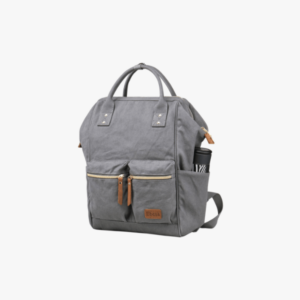Subtotal: $327.00
On the other hand, if not, there may be banks and microfinance banks to turn to for a loan. Also, there are angel investors that may be very interested in supporting your business. As such, you will need to identify aspects of a great recovery home for the best chance at sobriety.
They have since tightened their rules and shut off the unlimited supply of money. Navajo activists in Phoenix, who first alerted authorities more than a year ago to problems inside the sober-living homes, say they have tracked the deaths of at least 40 Native Americans who had been at these homes. Some died while they were still patients; some overdosed on buses or the streets after fleeing or getting kicked out. Others ended up homeless in Phoenix and died of heat exposure or were hit by cars. There is a wide variety of options available, including apartment style and dorm rooms. Rooms may be individual or shared with a roommate, and common spaces, like the kitchen, living room, and backyard, are shared by everyone living in the home.
How do sober living house rules help residents in their recovery?
Halfway houses also require that all residents either be currently attending substance abuse treatment or have recently completed a program. They provide shelter, safety, and an opportunity to continue working on your recovery. This page will https://en.forexpamm.info/intermittent-explosive-disorder-symptoms-and/ share info about sober living homes, halfway houses, and what they can offer. First, if you’re recently leaving a rehab stay or have just wrapped up an outpatient program, a sober living facility may provide you with the structure you need.
- Halfway houses are technically sober living environments, but there are many differences between halfway houses for people transitioning out of incarceration and sober homes for people in recovery from addiction.
- Some residences are free to the residents because they are government-funded or run by nonprofit organizations.
- The length of time depends on an individual’s unique journey and how long their treatment and recovery take.
- Most residents of these homes have recently completed an inpatient or outpatient treatment program.
- But, to the extent sober living facilities have been subject to governmental oversight.
The length of time depends on an individual’s unique journey and how long their treatment and recovery take. In the communal home, residents must pay their own way and may be required to take on more responsibility than they would in a rehab center. For example, members must often pay for rent and hold a steady job or attend school. They must also contribute to the community by helping with chores, taking responsibility for their actions, and respecting and obeying all house rules. In general, sober living homes are privately owned homes for people recovering from drug or alcohol addiction.
Best Practices for Recovery Housing
Organizations that offer SLH scholarships include CLEAN Cause Foundation and Ben Meyer Recovery Foundation, per Dr. Kennedy and Clark. A Level II recovery residence assigns a house manager or senior resident to oversee the workings of the house and has at least one paid staff member. Level II includes the services of a Level I home as well as peer-run group and self-help and/or treatment. Try to choose a quality sober living home located outside of your hometown as well.
Sober living house rules are often more lenient and flexible than traditional rehab facilities. One night in late March, Ms. Antonio and a friend left her sober-living home and drank at a small park in a gated community in southwest Phoenix, according to a police report. She was left lying by the front door, where a staff member found Ms. Antonio on the ground holding a can of alcohol, the report said.
They Wanted to Get Sober. They Got a Nightmare Instead.
However, sober living homes are generally less expensive than inpatient treatment centers. Rules in sober living houses are enforced by trained staff members Sober Living Program in Kerrville Texas who document any infractions. Severe breaches, mainly related to substance use, may result in the resident returning to a rehabilitation program.
- You have to help keep the place clean when you are in a sober living facility.
- Sober living houses are alcohol and drug-free environments where residents can establish or maintain their sobriety.
- Organizations that offer SLH scholarships include CLEAN Cause Foundation and Ben Meyer Recovery Foundation, per Dr. Kennedy and Clark.
- Sober living programs combine the best of both worlds in terms of allowing residents to carry out the affairs of normal everyday living while providing them with a recovery-focused living environment.
- People who have undergone addiction treatment in rehab centers often struggle to stay sober as they adjust to the real world.
- The brotherhood between house members empowers everyone to walk through tribulations with much-needed support, and to meet our high standards.
Most sober homes also require residents to attend 12-step meetings, and participation in these programs has been found to “be the strongest predictor of… primary outcomes” (Journal of Psychoactive Drugs). Residents may not possess drugs or alcohol, and their visitors – typically family and close friends – may not bring these substances in, either. Residents may bring in food, and more sober homes are allowing residents with chronic health problems or specific recovery medications to bring in prescriptions; however, prescription drugs are closely monitored. The ways that sober living houses work vary depending on the level of support provided. The National Alliance for Recovery Residences is one of the largest associations of sober living homes in the United States. It developed four levels of support that can be used to characterize most sober living homes.
Sober Living Regulations: A Look at Trending Legislation
Typically, as long as you follow the rules, you may live in the home for as long as you want. If anything goes wrong in the business, it is only the money that you invested into the limited liability company that will be at risk. As a matter of fact, if your intention is to grow the business and operate all across the United States of America, then choosing sole proprietor is not an option for you. Limited Liability Company, LLC or even general partnership will cut it for you.
Other sober living homes are more like boarding houses, except that there are strict abstinence requirements, and residents do not get the final say about rule-making. Although prior completion of a rehab program is common, it is not always a prerequisite to living in a sober residence. Many sober living homes will accept residents who are new to the rehab process as long as those residents are willing to stay sober and live by the house rules.
This group tends to be somewhat consistent across most types of sober living homes—which we’ll dive deeper into momentarily. Neither type of program is the same as a residential inpatient program. Halfway house residents must complete or have active enrollment in rehabilitation. Also, applicants with a criminal record will be denied at many of these homes.
These rules are not just arbitrary; they are rooted in evidence-based practices known to aid in sustained recovery. Sober living rules place an emphasis on mutual respect, accountability, and skill-building, serving as a framework for both individual and collective success. Sober living rules regulations are crucial in creating a harmonious living space, making it easier for residents to focus on their recovery goals. According to interviews with activists, former patients and Arizona officials, the small staffs who ran the homes made little effort to help people stay sober, and in some cases fostered their addiction.


 The Nest Learning Home Thermostat in Stainless Bag
The Nest Learning Home Thermostat in Stainless Bag  Metallic Over Ear Bluetooth Wireless Headphones
Metallic Over Ear Bluetooth Wireless Headphones 



